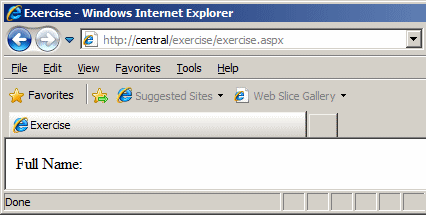|
|
A label is text that is presented to the visitor. To create
such text, you can just click anywhere on the web page and type the desired
string. If you want to get text that can respond to a visitor, you can use
the Label control, which is implemented by the Label class.
|
To visually create a label from either Microsoft Visual
Studio or Microsoft Visual Web Developer, from the Standard section of the
Toolbox, drag the Label object and drop it on the form.
To manually add a label, create an <asp:Label>
tag and add it to the form. Here is an example:
<%@ Page Language="C#" %>
<html>
<head>
<title>Exercise</title>
</head>
<body>
<form id="frmTimeSheet" method="post" runat="server">
<asp:Label ID="btnFullName" runat="server"></asp:Label>
</form>
</body>
</html>
|
Characteristics of a Label |
|
Obviously the most significant aspect of a label is the text
it displays. To specify this text, add a Text attribute to the tag and assign
the desired string to it. Here is an example:
<%@ Page Language="C#" %>
<html>
<head>
<script language="JavaScript" type="text/javascript">
</script>
<title>Exercise</title>
</head>
<body>
<form id="frmTimeSheet" method="post" runat="server">
<asp:Label ID="btnFullName" Text="Full Name:" runat="server"></asp:Label>
</form>
</body>
</html>
This would produce:

As compared to simple static text of a web page, the biggest
advantage of using a label is that you can programmatically update its text in
response to a user's action. To do this in your code, type the ID of the label,
followed by a period, followed by Text, and assign it the desired value.